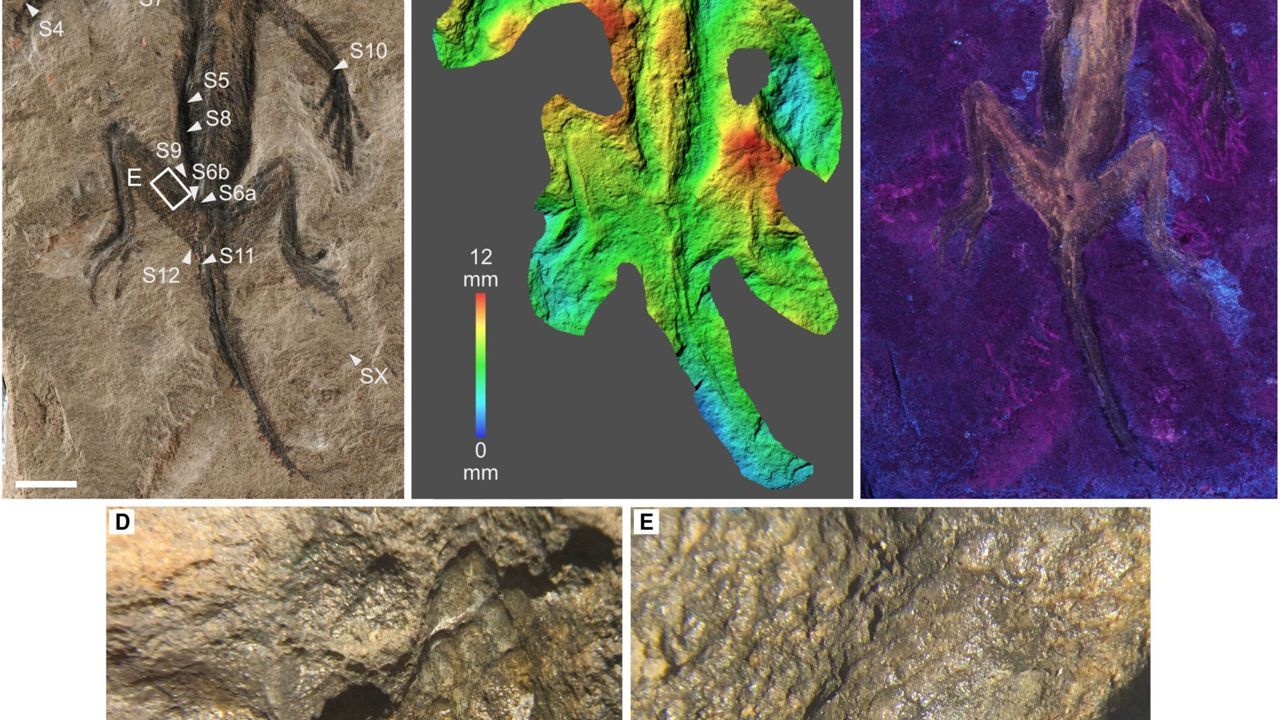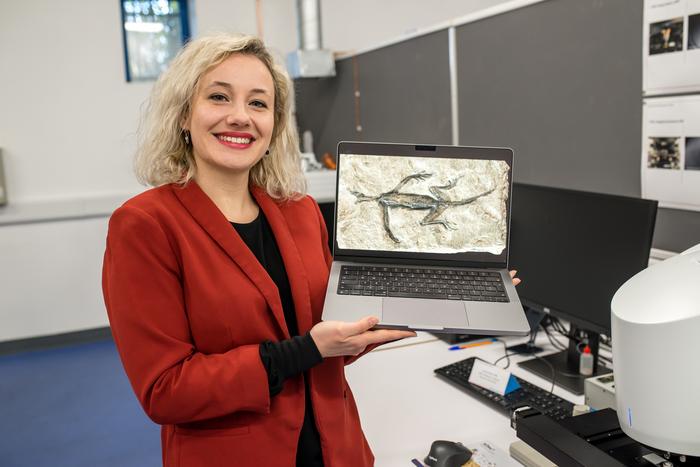Paleontological analysis of famous fossil shows that it is just paint
Paleontological analyses by the team led by Dr. Valentina Rossi show that the famous fossil, thought to show soft tissue preservation, is actually just paint

In new research published in the journal Palaeontology, a team from University College Cork (UCC) in Ireland, led by Dr. Valentina Rossi, revealed that the remarkably preserved Tridentinosaurus antiquus fossil is mostly just black paint on a rock surface carved in the shape of a lizard.
Discovered in 1931 in the Italian Alps, Tridentinosaurus antiquus is an important example of early reptile evolution. When it was first discovered, its body outlines, which appeared dark against the surrounding rock, were interpreted as preserved soft tissues.
The somewhat odd preservation of the allegedly fossilized skin, which was never studied in detail, left many experts uncertain as to which group of reptiles this strange lizard-like animal belonged to and, more generally, its geological history.
Dr. Rossi of the UCC School of Biological, Earth, and Environmental Sciences analyzed the material microscopically and found that its texture and composition did not match those of real fossilized soft tissues.

Preliminary examination using UV photography revealed that the entire specimen had been treated with some kind of coating material.
The team hoped that beneath the coating layer, the original soft tissues were still in good condition to yield meaningful paleobiological information.
The findings suggest that the body contours of Tridentinosaurus antiquus were artificially created, possibly to improve the fossil's appearance.
The team behind this research includes participants based in Italy at the University of Padua, the Natural Museum of South Tyrol and the Museo delle Scienze in Trento.
Source: Newsroom







